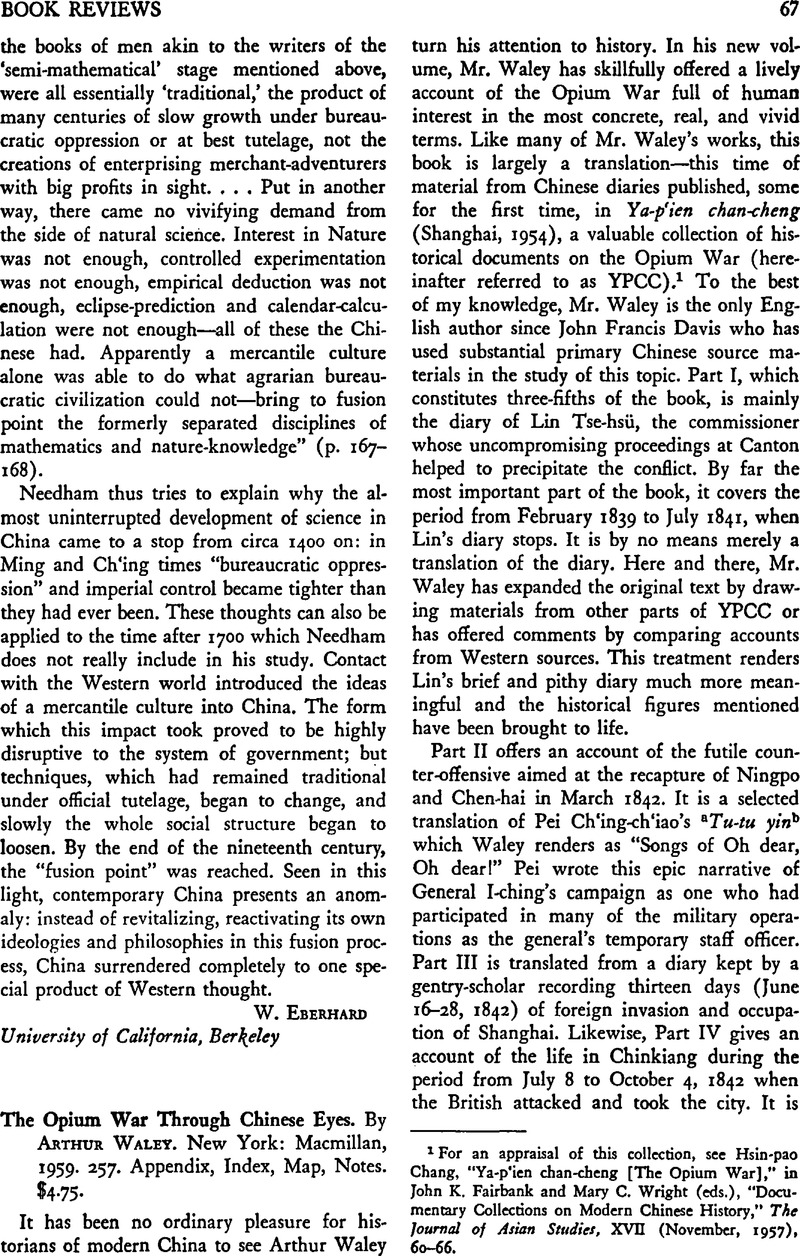Article contents
The Opium War Through Chinese Eyes. By Arthur Waley. New York: Macmillan, 1959. 257. Appendix, Index, Map, Notes. $4.75.
Review products
Published online by Cambridge University Press: 23 March 2011
Abstract

- Type
- Book Reviews
- Information
- Copyright
- Copyright © The Association for Asian Studies, Inc. 1959
References
1 For an appraisal of this collection, sec Hsin-pao Chang, “Ya-p'ien chan-cheng [The Opium War],” in John K. Fairbank and Mary C. Wright (eds.), “Documentary Collections on Modern Chinese History,” The Journal of Asian Studies, XVU (November, 1957), 60–66.
2 This is not quite in keeping with what was said by Liang Ting-nan, the president of the academy. Liang said that when the academy became Lin's headquarters, it was the Hong merchants who moved and took temporary residence right next to the academy (ch'iao-yü ch't-tśe) so that Lin could summon them at any time for conference. See YPCC, VI, 25. Moreover, the Yüeh-hua Academy, situated in the northeastern part of the Old City, was really not at all near the premises of the Hong merchants and factories of the foreign traders, which were located in the southern suburb of the New City. See “Plan of Canton City and Suburbs,” Map at the British Museum, Or. 7431.
3 See especially his diary on November 30, 1840, January 25, 27, and 31, 1841, in YPCC, II, 55, 59, 60.
4 This was not only clearly stated in Lin's diary, but was also corroborated by a poem of Teng, see YPCC, II, 581.
5 John Robert Morrison, A Chinese Commercial Guide, Consisting of a Collection of Details Respecting Foreign Trade in China (Canton, 1834), pp. 4, 14.
6 William C. Hunter, The “Fan-Kwae” at Canton before Treaty Days, 1825–1844 (London, 1882), p. 29. There is at the British Museum a colored picture of a ma-chan, complete with Chinese and English captions, drawn by a Chinese artist of Canton. See “Chinese Drawings: A Volume of One Hundred Drawings Illustrating Various Trades and Classes of People,” MS in the Oriental Printed Books and Manuscripts, Or. 2262, item 20.
- 1
- Cited by


